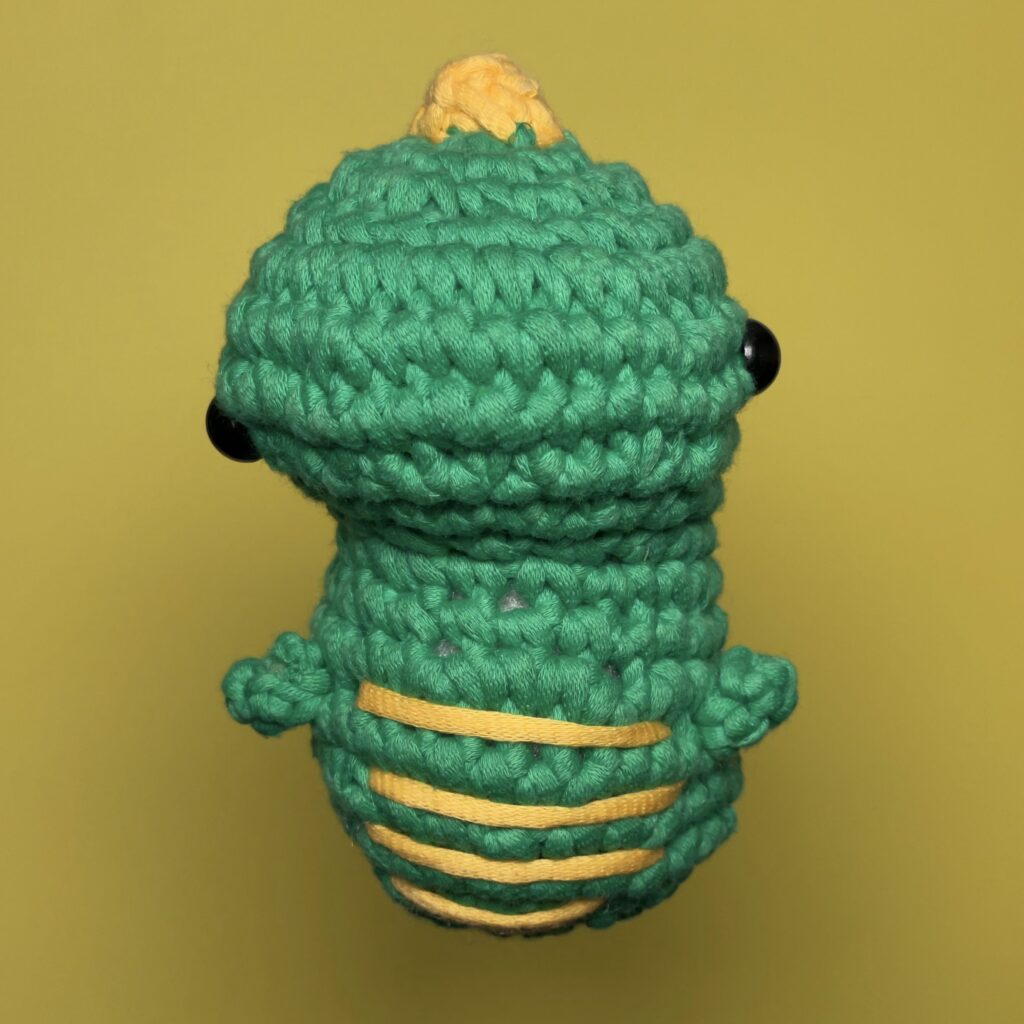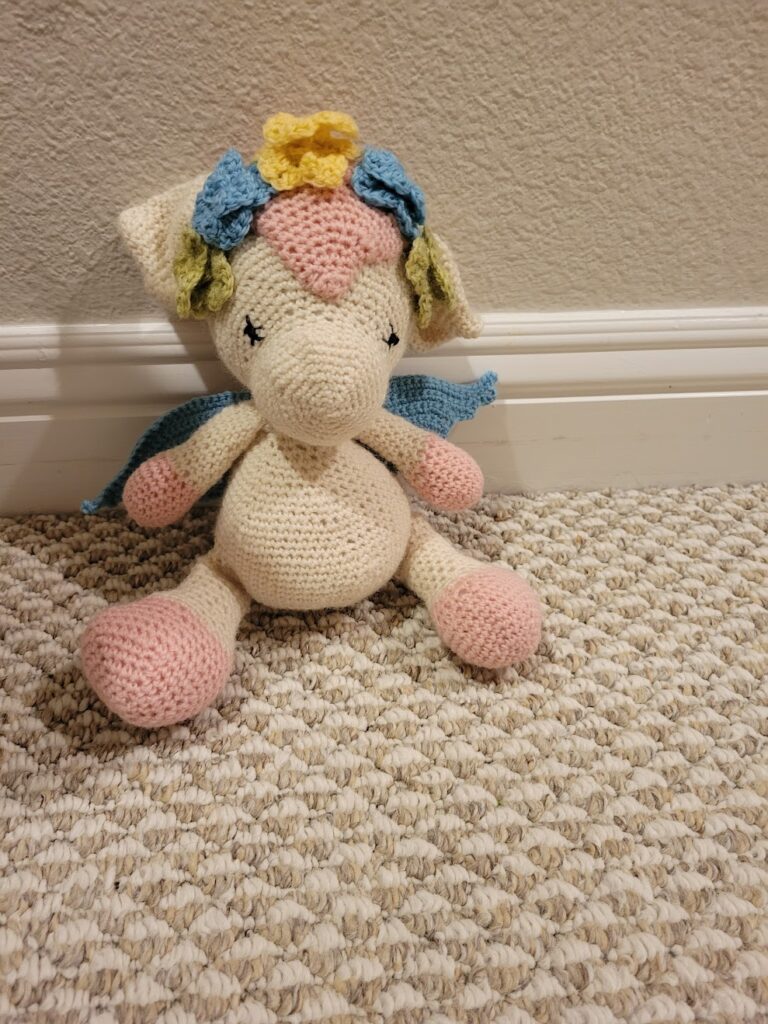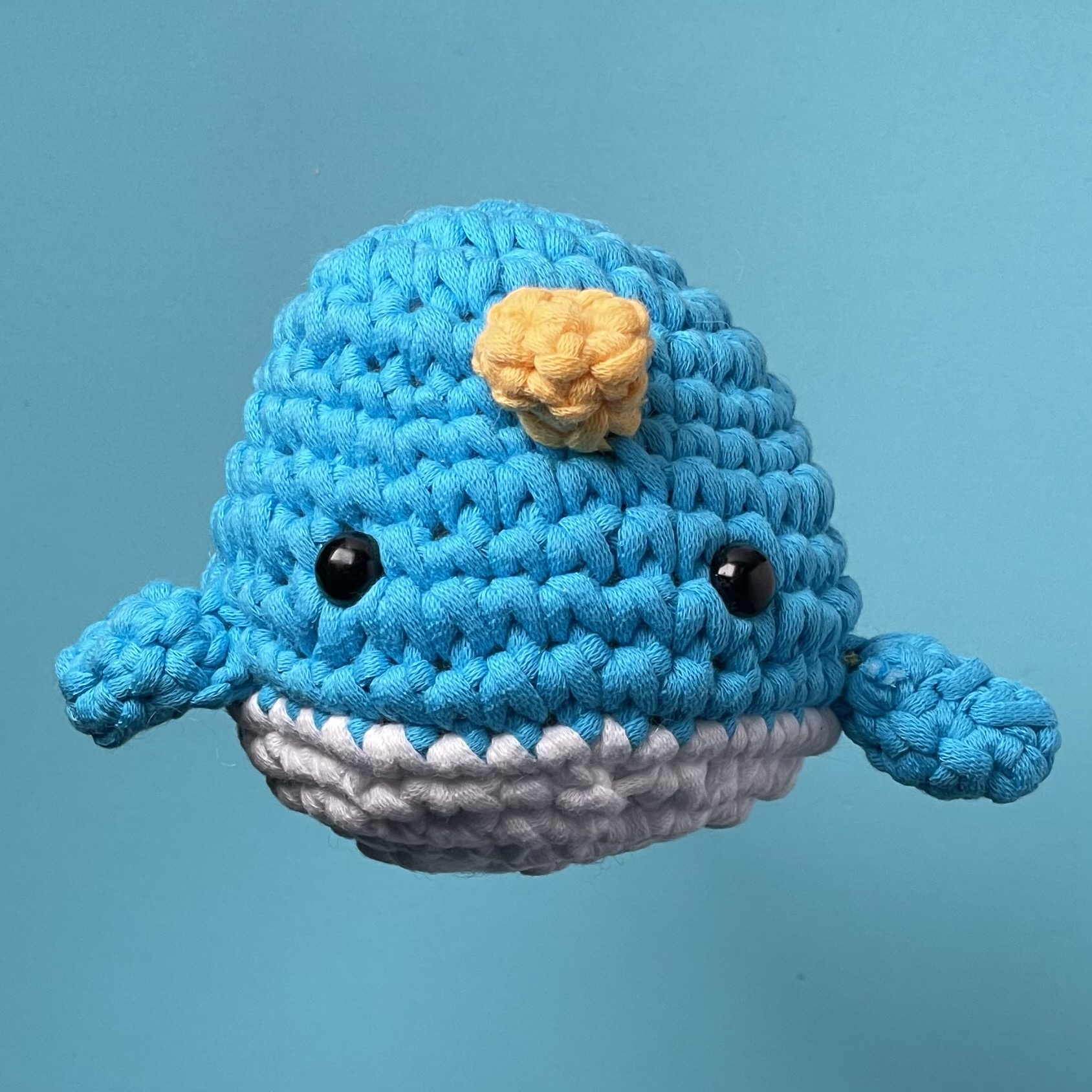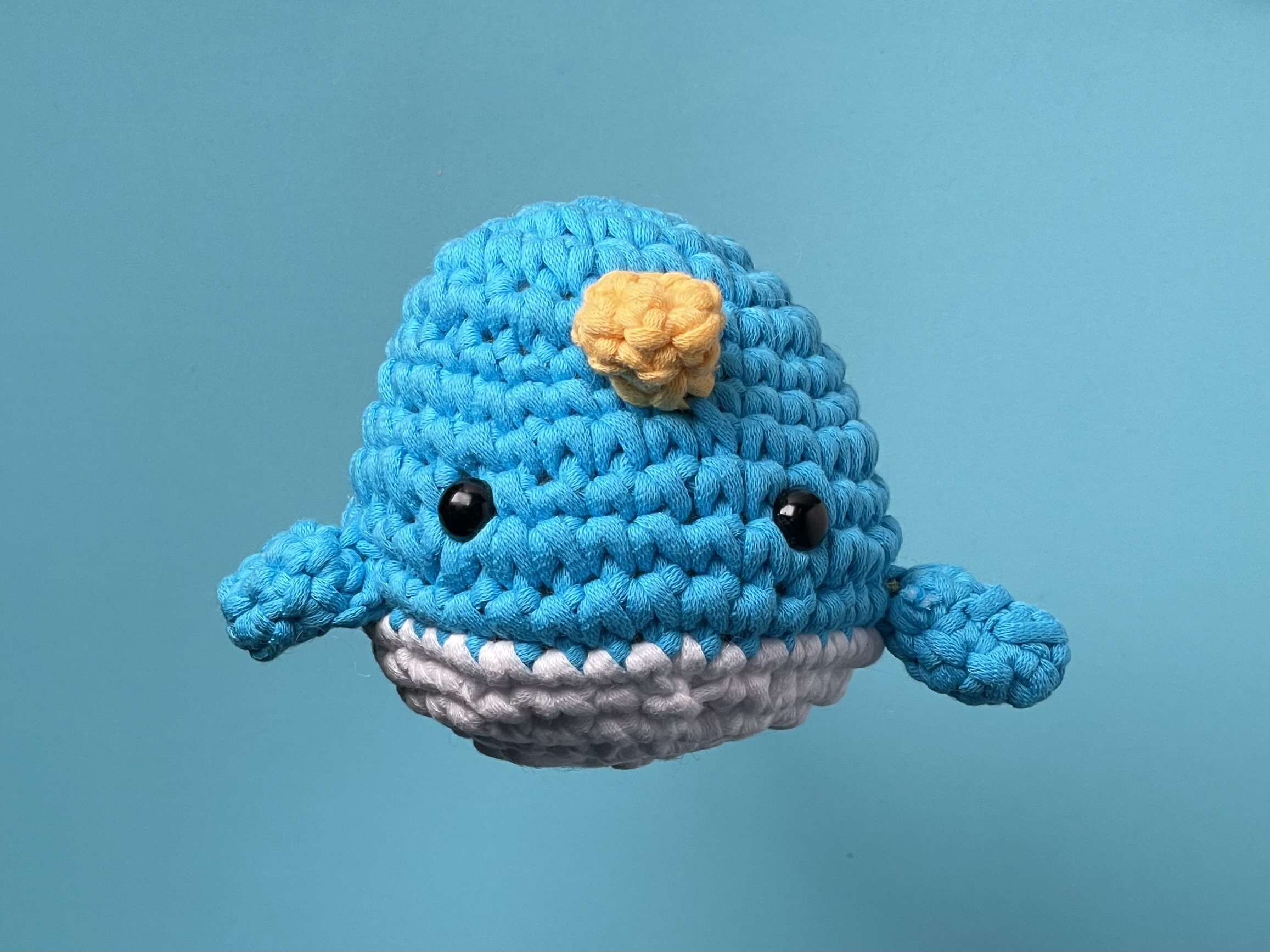Are you an absolute beginner to crochet and amigurumi and wondering where to start? There are a lot of options! No worries, I’m here to get you started and show you how to scale up your skills quickly.
Why me?
Because I’ve experienced being both a miserable failed beginner *and* finally getting it to be far more skilled. It didn’t come natural to me, so I have tips and tricks to help people where it may not come natural to you either.



This post goes over:
- Selecting Yarn
- Beginner Tools
- Beginner Friendly Patterns
- The Woobles
Selecting Yarn: Consider Beginner Friendly Yarn
When I first started trying to learn crochet as a pandemic hobby, I went to Michael’s and got a pretty ball of yarn, a set of cheap hooks, and sat down to watch some Youtube videos labeled for beginners. It didn’t work. Some people do just fine, but I didn’t. However, there is a lot of nice, cheap, normal yarn and you might be successful with it. So try that first.
But if that doesn’t work, try beginner-friendly yarn. The Woobles Easy Peasy yarn is one type.
One of the biggest problems I had in my first failed attempt at crochet is that the yarn I chose wasn’t beginner-friendly. It wasn’t advanced yarn or anything. It just was a bicycle without training wheels, and I was a toddler with pretty suspect balance.
The Problem with Normal Yarn
To understand why most yarns are hard for some beginners, you can start at what yarn is. This post gives a good overview if you’d like more depth, but essentially a strand of yarn is many strands of fiber interlocked together. If you aren’t careful with how your hook interacts with a strand of yarn, you can split the interlocked fibers.
Split yarn is yucky. When you’re more advanced, the problem of split yarn is that it doesn’t look good. When you’re a beginner, you can’t even crochet with it. One of the main skills you’ll need to develop early on is being able to see and count stitches. A stitch made with split yarn is messy and hard to see. It’s also just mechanically difficult to work with. Also, attaching new yarn to a piece after you’ve cut the previous yarn is a skill you don’t want to face on your first project.
Some yarn split easily when you “frog” (that’s the term for undoing your stitches because you made a mistake) part of your work to re-do it. Even if you’re just frogging the stitch you just did. As a beginner, you’re going to frog frequently because you’re still learning to count and track stitches, and you’re inevitably going to make a mistake.
Beginner Friendly Yarn
I’m a big fan of the Woobles’ Easy Peasy Yarn for beginners (I make no money from you clicking that link; the recommendation is 100% sincere). Its consistently is a bit more like shoelaces, so in the entire time I’ve used it, I’ve never seen it split. It’s a bit pricier, though, so you can try to search around for other yarn labelled beginner-friendly. You’ll want to make sure they’re advertising that it’s unlikely to split in the description. I don’t have any other recommendations, though, because I spent my beginning days with the Easy Peasy Yarn.

Do Not Buy A Hank
If you are a beginner, I cannot stress enough how you should not buy a hank.

There are many beautiful yarns only available in hanks. Wait till you get more into the hobby first. Skeins, balls, and cakes are fine. But for a hank, you’ll need a yarn winder and possibly also a yarn swift. Keep it simple for now.
I have an entire post dedicated to this here: Crochet Beginners: Yarn hanks, skeins, balls, or cakes?
Beginner Tools
All beginners to amigurumi will want to consider the following tools:
- Hook
- Yarn
- Pattern
- Stuffing (any fiberfill works. I got a huge bag from my local crafts store for $4.)
- Scissors
- Stitch markers (cheap ones are fine)
- Sewing needle (probably)
- Safety eyes (optional)
Safety Eyes: If you want your creation to have eyes, you’ll need to either have yarn in the desired color of the yarn and a needle OR safety eyes. Safety eyes are not safe for small children (strangely named, I know).
Sewing Needles: There are “no sew” patterns out there, but I’d just go ahead and get a cheap tapestry needle to give yourself optionality.
Yarn Hook: Here is my review of four different brands at four different price points: How To Buy A Crochet Hook. If you’re on a budget, I recommend either the Woobles or Susan Bates, but overall I highly recommend Clover Amour.
Yarn Hook & Size for Beginners
The recommended combination of yarn hook and size is different for “flat” crochet pieces (blankets & scarves) versus amigurumi. Most yarn will list the hook size needed for flat crochet pieces, so if you’re planning to do amigurumi you should go 1-2 hook sizes down.
Yarns are rated with size from 0 to 7, with 0 for the finest yarn, and 7 for bulky yarn. and as an absolute beginner you’ll want to start with weight 4 out of 7, called “worsted”, and around a size 4.0mm hook. (Note these terms are different in the UK). The three lighter weights of yarn (1-3), with their associated smaller hooks, tend to make visually smaller stitches, which can be hard to see if you’re new because you’re not confident yet in what you’re looking for. You’ll get there soon – I just don’t recommend it for the first 1-2 months. I made this in my third month with fingering yarn (weight 1 superfine) and a 2mm hook:

Beginner Friendly Patterns
A pattern is basically the crochet version of a recipe. It tells you which stitches to do in what order to make a creation.
You want to find a pattern that focuses on “single crochet” stitches and that doesn’t have too much variety past that in the beginning. The single crochet is the easiest stitch to practice how you’re holding your hook and yarn, and maintaining tension. A lot of other stitches “build” on single crochet too, or even have the same hand movements built inside of them.
Consider making something simple and “flat” in the beginner — a drink coaster, a simple square — as your first challenge. Then do a small sphere. After that, you’re ready.
Also, there are patterns with mistakes out there. By my sixth month I had a good feel for what to “expect” and could spot mistakes, but in my first few months I had no feel for it yet. For your first three months, stick to patterns that have either been vetted and published in a well-reviewed book of patterns or published by someone who clearly has an online following.
At this blog, I maintain a “Pattern v s Reality” series where I review every pattern I try and offer tips & tricks for beginners attempting them. I’ll never recommend a pattern here that I haven’t personally tried myself and posted a review for.
The Woobles
I would be remiss to not hype up The Woobles (not getting paid to), because I learned from the Woobles. Six out of my first seven crochet creations were made from Woobles kits and I am forever grateful. If you are not an absolute beginner, though, then they’re not for you. If you know the single crochet stitch, how to count your stitches, and how to read a pattern, skip right over them. I have a full article about the Woobles here: Are the Woobles worth the hype?, but here’s a short summary:
What are the Woobles?
Launched by winners of Shark Tank, the Woobles is an all-inclusive beginner kit carefully crafted for absolute beginners. You really don’t need to figure any of the above that I explained to you out — it’s all done for you.
- Everything You Need In One Kit
Each kit comes with everything you need, including the yarn, (there’s a $5 swing in price depending on whether you want the hook it comes with). The items are good quality — I still use the materials given to me by the Woobles and prefer their hook over others I’ve bought. The yarn is extremely beginner friendly.
- Excellent Instruction
Their website has very careful step by step instructional videos and pages taking you through their patterns. Their instruction is superior to most of the videos I ever found on YouTube. You can also e-mail them for help or join the Facebook group.
If you have any questions about anything I’ve said in this post, feel free to drop them below in the comments!




One thought on “Start Here For Your Amigurumi Adventure: Advice for Beginner Crochet”